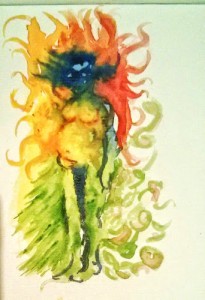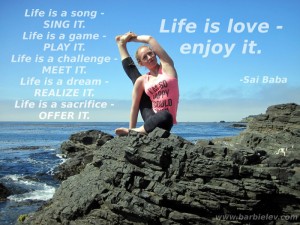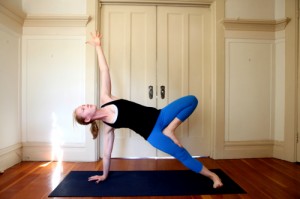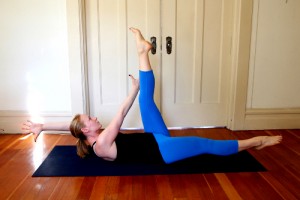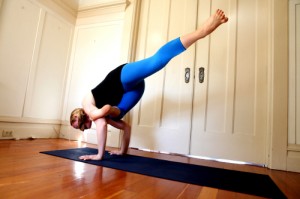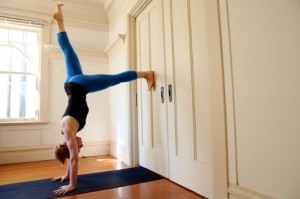January 19 – January 25: 31 Weeks 0 Days – 31 Weeks 6 Days.
It’s funny that how our bodies feel can so profoundly affect our mental state. Last week I got some good chiropractic adjustments and was feeling like a pregnancy goddess. This week, I had a not-so-great adjustment (from a different chiropractor) and everything about my pregnancy seemed less glorious.
Last week I was gazing into the mirror admiring the best complexion I’ve had since before I hit puberty (with hormones drop-offs, no more cyclical acne!). This week, I was standing on a stool in my panties in front of the bathroom mirror to get a good look at my varicose veins so I could spend some quality time obsessing over them (I’ve gone weeks without thinking twice about them). Last week I celebrated the achievement of learning to ask for help at the grocery store. This week I felt helpless and frustrated—like I couldn’t do anything on my own. I had the energy to buy potted herbs, soil, and a planter, but I didn’t have the energy to actually do anything with them. On top of all that, the furnace was out of commission for three days, leaving Richard and me shivering.
It’s not that there weren’t great, fun, amazing things happening this week: Richard and I have been consciously spending more time talking and interacting instead of checking out and watching TV; I found out I could cook a whole chicken in just 30 minutes in my pressure cooker (then use the slow cooker function overnight to make broth); and, I won a gangster-themed board game at a friend’s birthday party, probably partly because other players had an unconscious aversion to pointing a foam gun at a pregnant lady. I was just latching onto the negative stuff because I was achy and cold: my shoulder and upper back were tense, the baby was pushing up against and kicking my stomach, and I was starting to feel like a big fat sumo wrestler.
In the middle of my second trimester, a recently-pregnant acquaintance told me, “You look great! I just wanted to make sure I told you that, because I know I felt like a fat cow during pregnancy.” I tend to have a positive body-image and at that time I couldn’t fathom thinking of myself as a “fat cow.” Now that my belly is twice the size it was then and many of my movements are punctuated with groans and grunts, I’m beginning to understand where she was coming from. Between my change in appearance and physical limitations, it’s harder to maintain a positive body image!
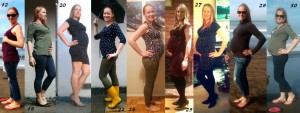
Bump progress report: 12 Weeks to 30 Weeks. My pregnancy fashion tip: Tight pants and a top that’s fitted above and below the bump are the cutest. The looser the pants the bigger I feel.
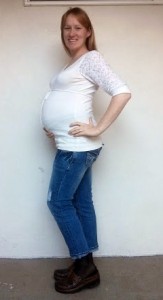
This week: 31 weeks pregnant, wearing mom shoes. (To continue the point above: imagine how much cuter this would be if I was wearing tights).
Here’s what I’m doing to maintain a positive perception of my body:
1. I allow myself to feel my feelings. Sometimes I get down about not being able to be as physical as I used to or not looking the way I want to, and that’s okay. There’s no good or bad or right or wrong with emotions; they are what they are. Just because someone else has it harder than me or millions of women have been through this before doesn’t mean I am not allowed to feel a certain way. I’m entitled to my experience. Instead of trying to bottle up these feelings, allowing them to fester in my subconscious for weeks or months, I acknowledge them, allowing me to process them, talk them out if needed, and ultimately move through them. The moving through part is important—I try to avoid the addictive behavior of wallowing in negativity.
2. I shift focus to what I can do, rather than dwelling on what I can’t. There are holes in my day where my old activities used to be, and it’s been helpful to fill those voids with new activities, rather than sitting around feeling bored and incapable. I can do prenatal Pilates, I can swim, I can paint, I can play piano, I can write, I can plant my herb garden (just maybe not all in one day). And, the ultimate ability: I can build a fully functioning human being using nothing but some DNA from my husband, food, and my internal organs. That’s kind of amazing. Outside my body, this would probably take a team of scientists, millions of dollars in grants, and years of concerted lobbying effort to get the project past an ethics board. Here I am doing it with only nine months of mild to moderate discomfort. Part of me is eagerly looking forward to childbirth as the ultimate expression of this all the work I’ve been doing over the last nine months.
3. I talk to real women about pregnancy, childbirth, and parenting. Although I have a science degree, reading statistics about how the average pregnancy “should” go is only marginally helpful. Nobody has the average pregnancy. When I was nauseated through my first trimester I talked to many women who had not been nauseous at all (validating my feelings that I had it rough), and I also talked to several women who were hospitalized throughout pregnancy because their unrelenting nausea was so bad they couldn’t gain weight (giving me the perspective to feel gratitude that I didn’t have it that rough). Doing prenatal Pilates and doing my prenatal appointments in a group setting has given me the opportunity to see real women at various stages of pregnancy, and see how different it shows up from body-to-body. My take-away: the media sets unrealistic standards even for pregnant women’s bodies.
4. I reframe “me” into “we.” I fall solidly within the millenial generation, which is illustrious for narcissism and self-centeredness. Although I consider myself compassionate and empathetic, I do sometimes catch myself falling into these millenial stereotypes. During the holidays, I visited a doctor I’d never seen before to make sure I didn’t have an ear infection (it was fine, probably just adjusting to my abnormally firm body pillow). At the beginning of my appointment she asked, “How’s your pregnancy going?”
My response: “It’s been okay. I mean I’ve had some aches and pains, difficulty sleeping, and my digestive system feels squished, but I guess that’s all pretty normal.”
She looked at me for a couple seconds, and then asked, “…And how’s the baby?”
“Oh!” I replied, a little embarrassed that I hadn’t even thought to talk about the baby, “She’s great! Everything is on track. Her heart beat is strong every time they measure it and she’s growing at a good rate. She’s moving around a lot now, too.”
Looking back, my energy talking about myself during pregnancy was drab and grey, but when I talked about the baby I was vibrant and animated. My baby is already a huge source of joy, love, and pride to draw from. This week, when my husband asked me how I was doing I processed my challenges and insecurities with him (as per my first point); however, when acquaintances and strangers asked about how my pregnancy was going I told them the baby was doing amazing and kicking all the time! It was uplifting to remind myself of the big picture that includes more than just me.
Shifting awareness from “me” to “we” is of course also important prep for being a mother, and I do feel my mentality shifting in that direction. I cried the first time I watched this video about what’s really important in motherhood, and I cried even harder when I watched it with my husband a second time (it’s not even that emotional, and at the end of the day it’s a formula ad).
The pregnancy hormones may be a contributing factor too. I was crying during this video about the secret meaning of “Closing Time” by Semisonic well before he even started singing:
In any case, I take the tears, emotional turbulence, self-judgment, and even physical discomfort to be telltale signs that I’m going through an amazing, radical transformation. Every day I step closer to fully embracing this wonderful change.
